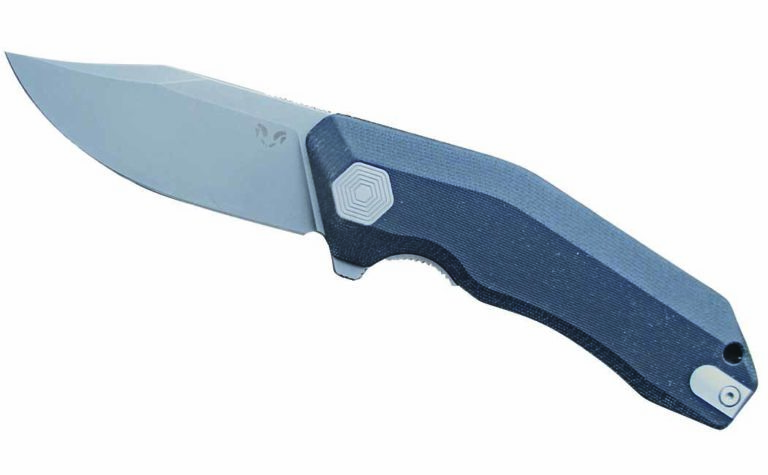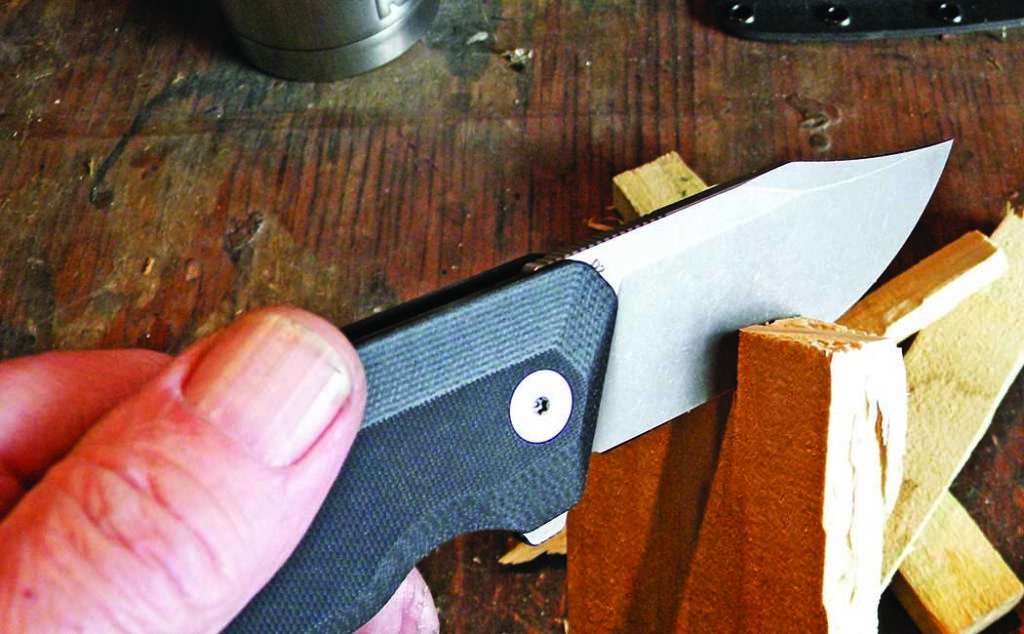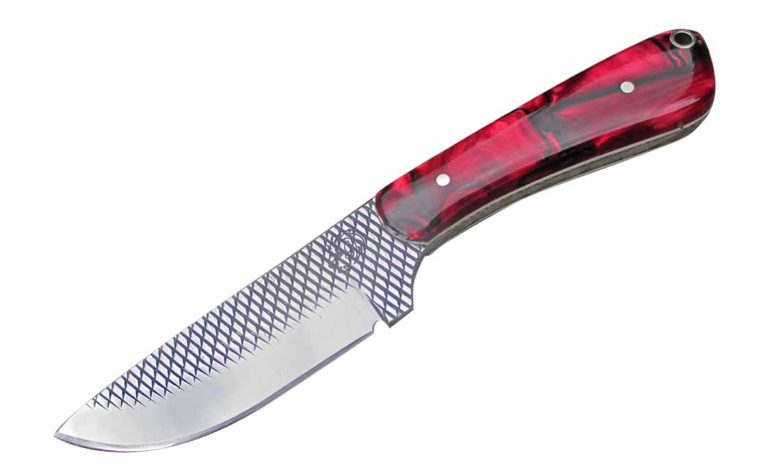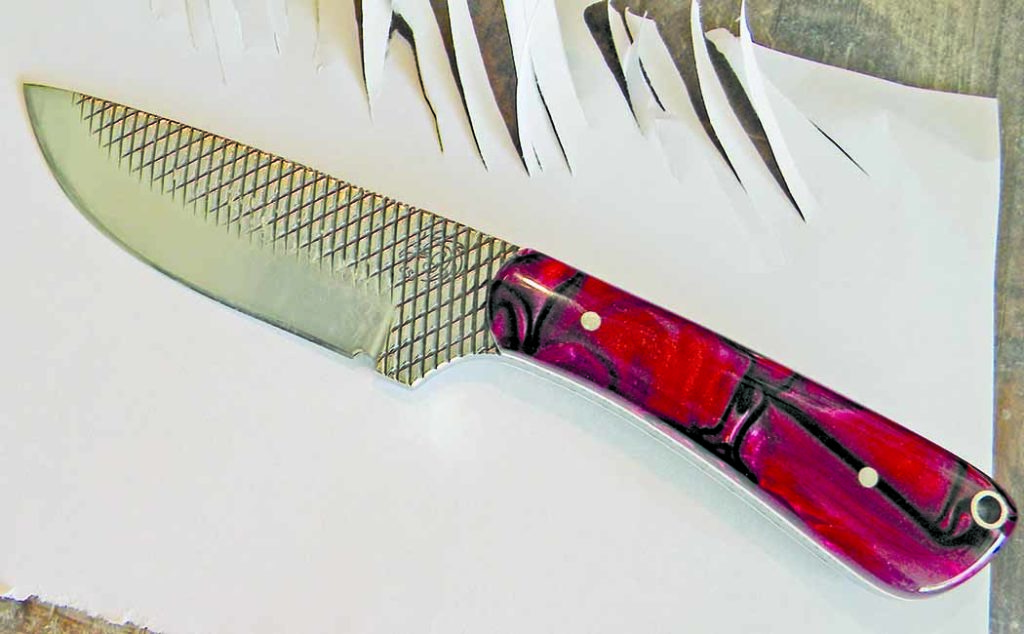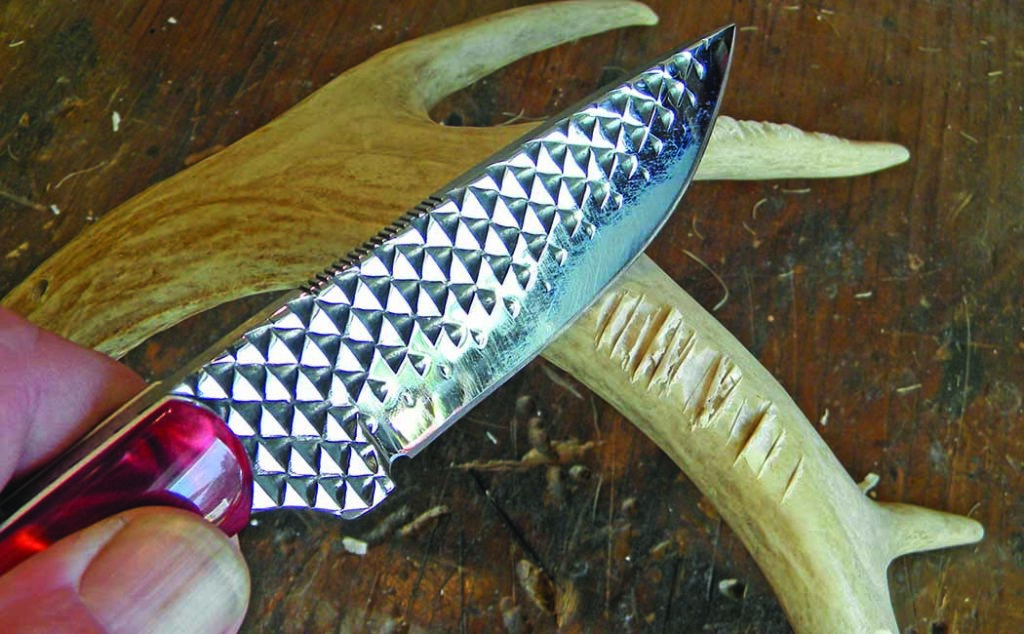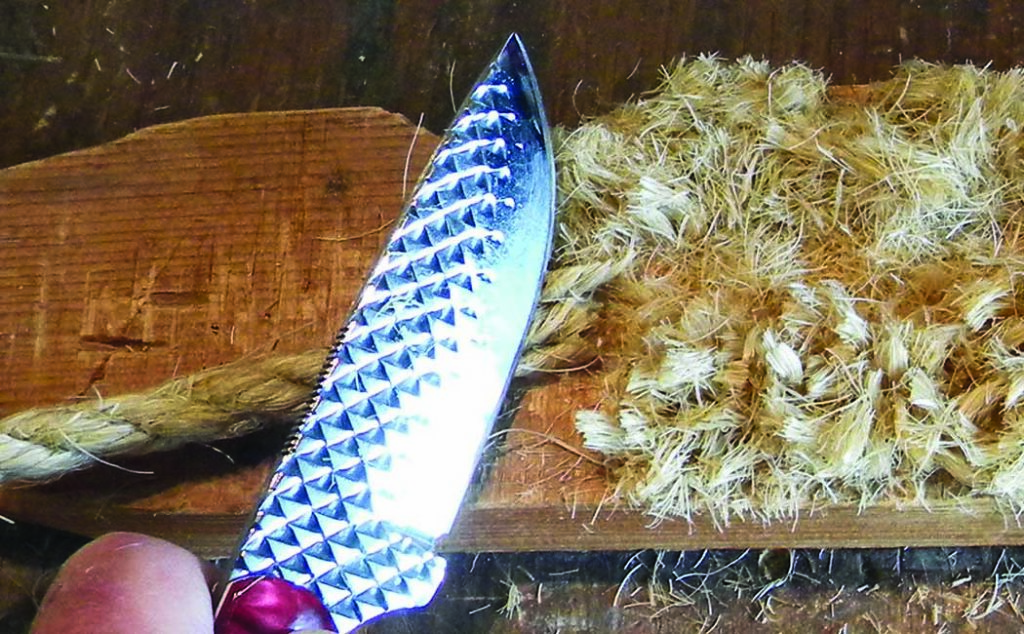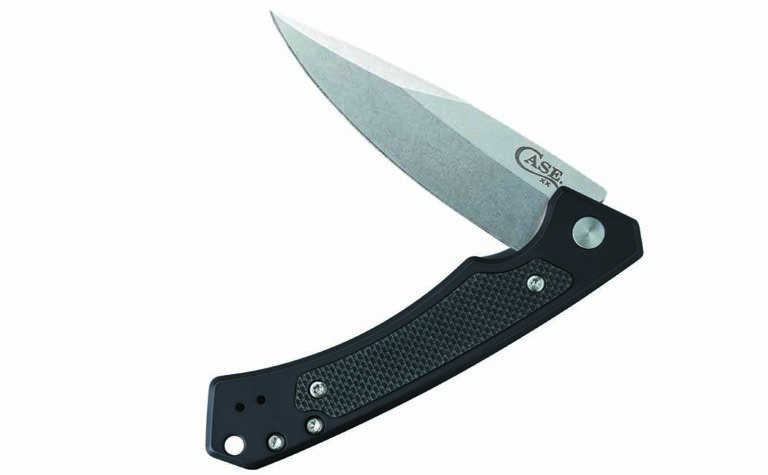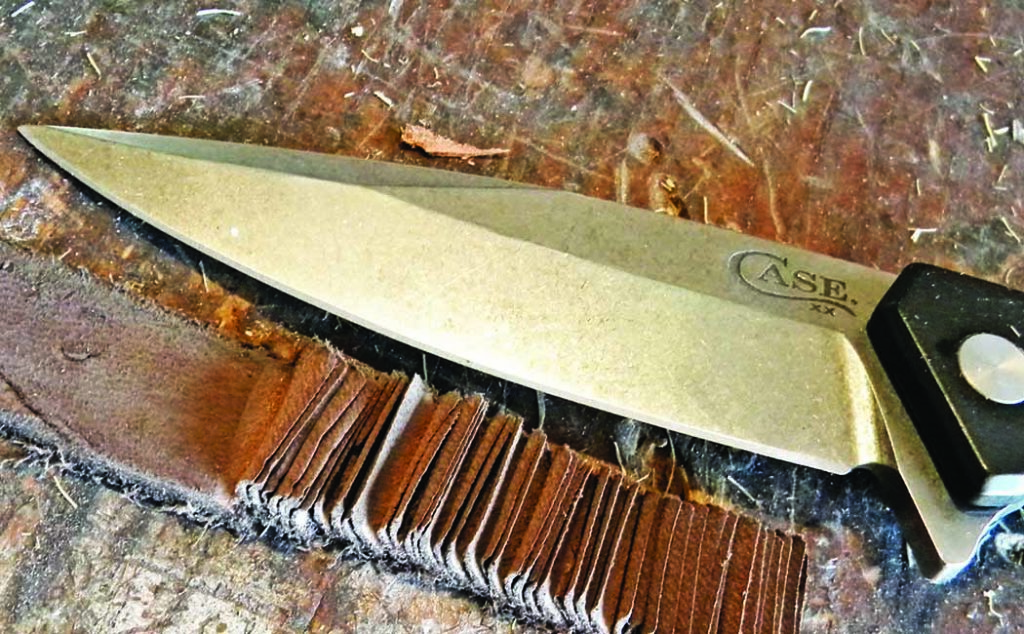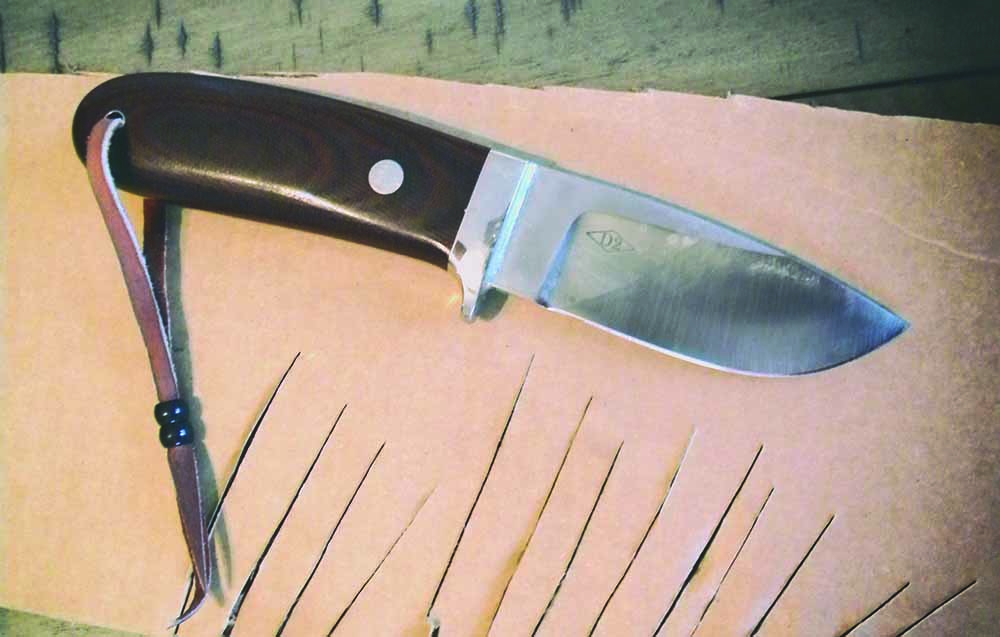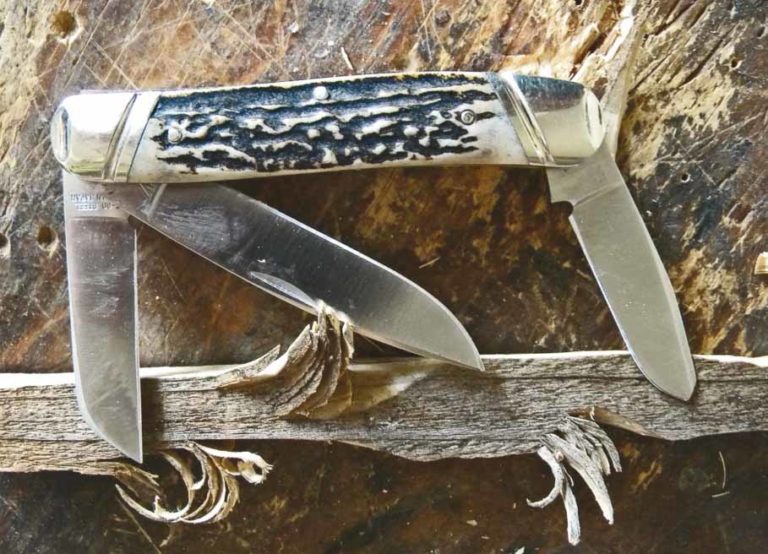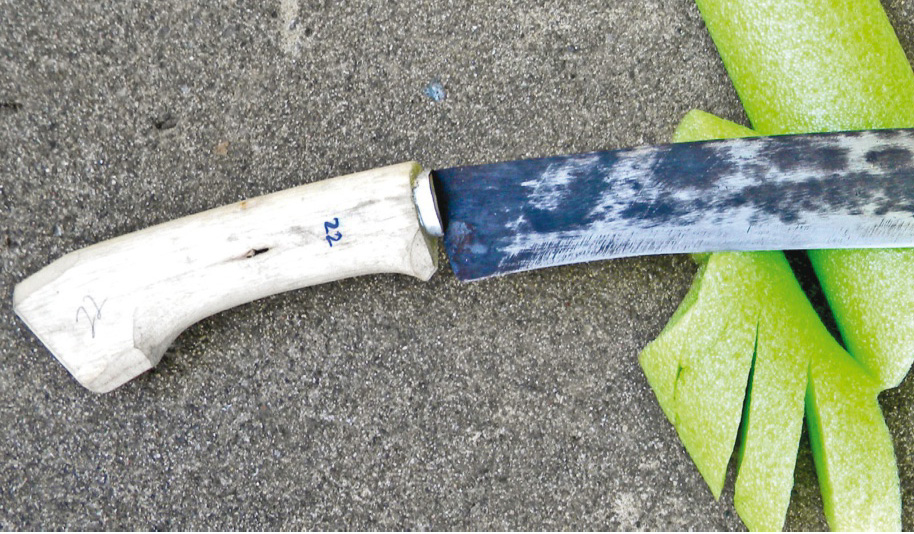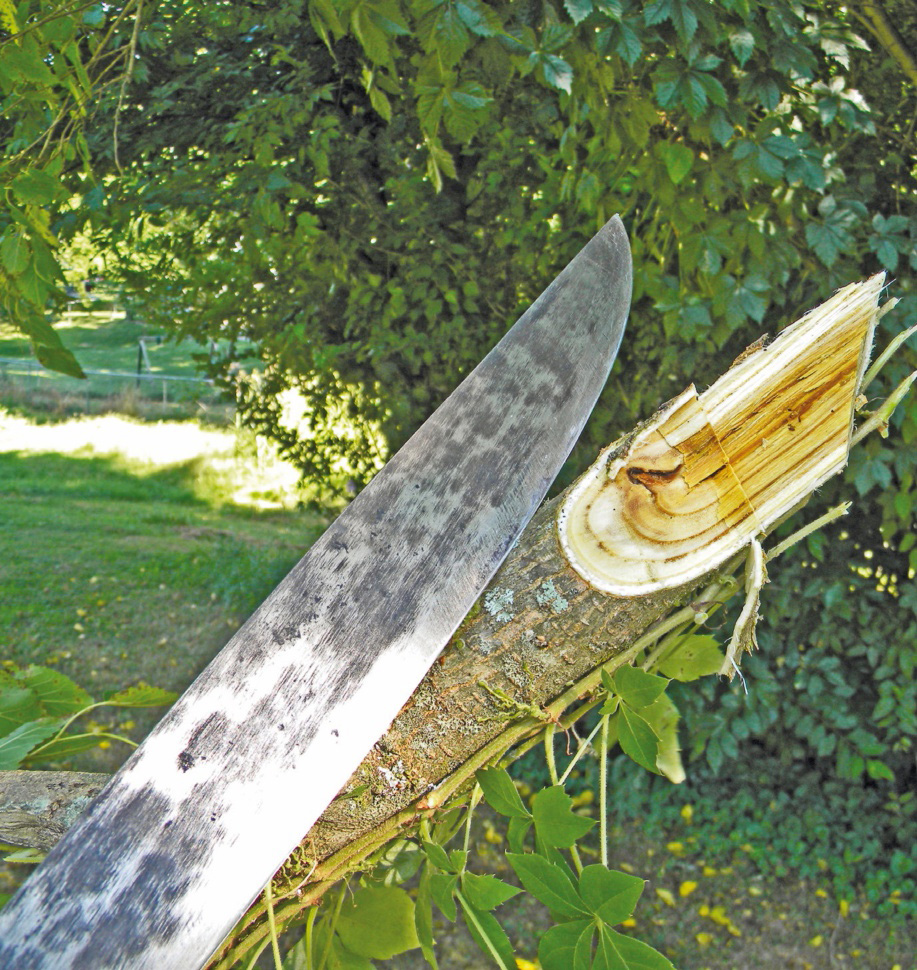Cutting-Edge Karambit-Style Knife? Or Dull Player? The author searches for his cutting mojo with the Hawk Creek Blade E-VAC.
Though karambits/ringed knives are popular, I am not a fan. New from an equally new knife company—Hawk Creek Blade E-VAC is such a special-use knife, and it requires practice to use it to its full potential.
Normal cutting situations just don’t feel right to me with this knife pattern. I’m sure that with enough repetitions—that’s why they provide a mild steel training blade with the standard version—it would feel normal during most cutting chores.
Hawk Creek Blade E-VAC Edge Test
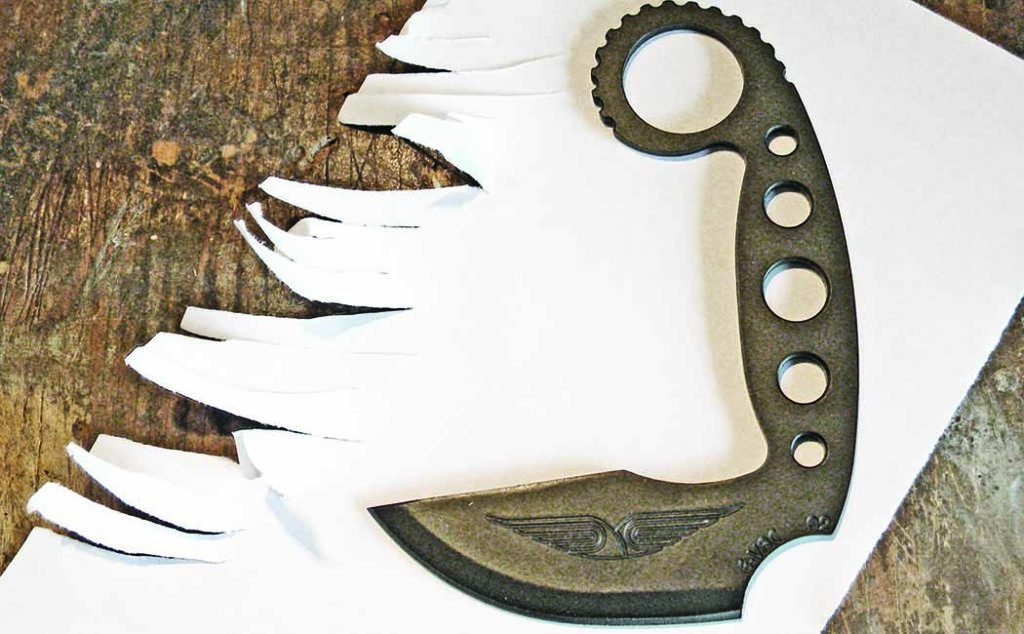
In slicing 20-pound bond copy paper, when I got the cutting angle correct I was rewarded with an aggressive slice. When I got the angle wrong, the result was more of a torn slice. I need more practice with the E-VAC to get the hang of it.
E-Vac Heavy-Duty Cutting
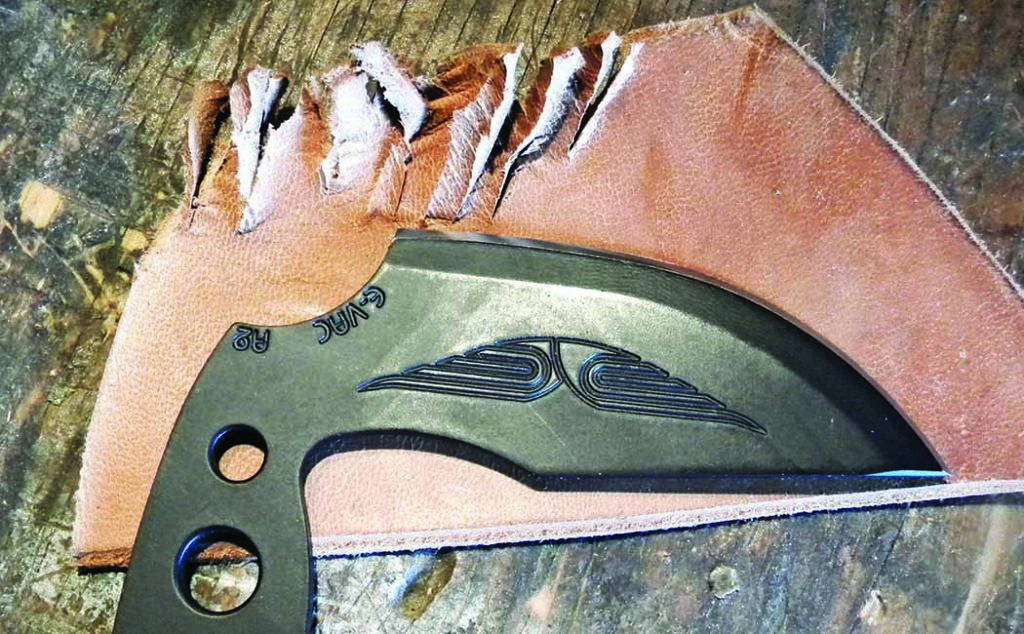
On single-walled cardboard I did better with a push cut than a pull cut. Again, when I got it right, the knife cut aggressively. On the cardboard, I rolled into the push cut like cutting with an ulu. Using more of the wrist than the hand seemed to work best.
Moving on to some 8-ounce leather, I tried my luck at skiving. The E-VAC worked great. The size of the cuts was controllable both in width and depth. Using the ulu style of rolling into the medium worked great for me.
Batonning The E-Vac

I batonned the E-VAC through some left-over fencing 1/2 inch thick by 6 inches wide. It was somewhat of a challenge to keep my knuckles out of the path of the dead blow hammer. However, once I got a rhythm going, the knife made short work of the scrap wood. The thin blade split deep on each blow.
E-Vac Smaller Wood Cuts
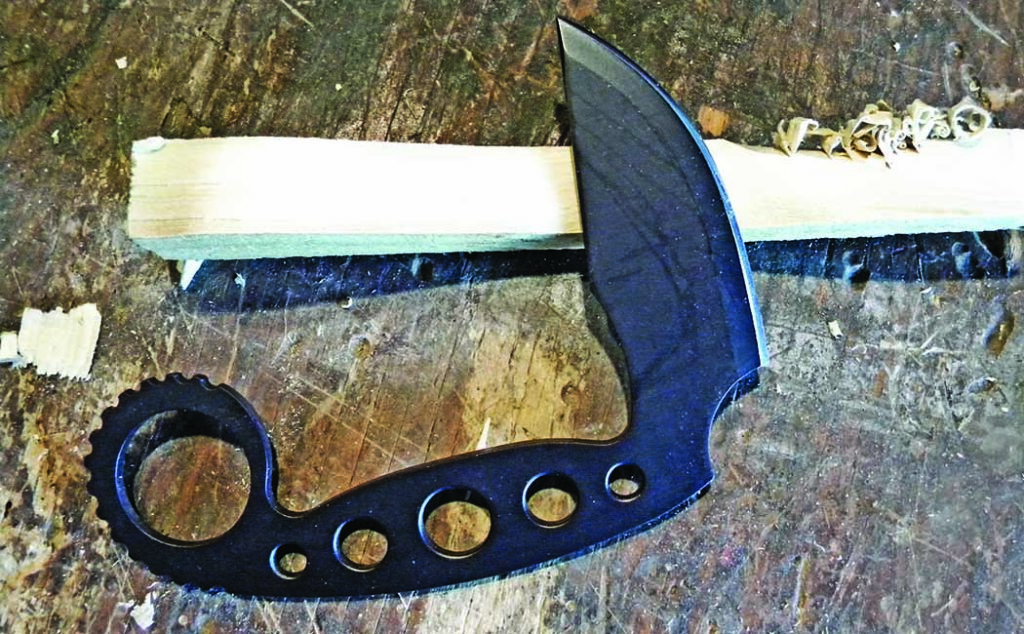
Since I had a bunch of smaller pieces of wood, whittling was next. The knife gave me some very nice curly-cues. Depth of cut was quite controllable. Some thin scales or a 550 cord wrap would have given me a better grip for power cuts.
E-Vac Vs Sisal Rope

I did not do a sisal rope cut as I did not have the time to work on my rope-cutting technique with the E-VAC. Nonetheless, the edge feels plenty sharp enough to work well on rope.
As noted, Hawk Creek Blade provides a non-sharpened, coated mild steel trainer blade to practice your twirls and swirls without cutting yourself. It’s a very good addition to the overall package.
Assessment Of The Hawk Creek Blade E-VAC
The E-VAC works great for its designed purpose. Thinness and lightweight add to its usability.
Recommendations…
A somewhat thicker handle would give a more comfortable grip for stronger cuts.
Hawk Creek Blade warrants its knives against defects in material and workmanship. For more information contact Hawk Creek Blade Co., www.hawkcreekbladeco.com.
Hawk Creek Blade E-VAC
Knife: E-VAC
Company: Hawk Creek Blade
Knife Pattern: Karambit
Blade Length: 27/8 inches
Blade Material: A2 tool steel
Extras: Includes a coated mild steel trainer for training purposes
Weight: 3 ounces (7 ounces w/sheath)
Overall Length: 5 inches
Sheath: Kydex
MSRP: $135
More Knife Reviews:
- Review: Bare Bones Buffalo Skinner
- D’souza Cerberus Review: Strong Showing Budget Blade
- Manzano: Appealing Look And Performance
- Case Marilla: A True Light Heavyweight



